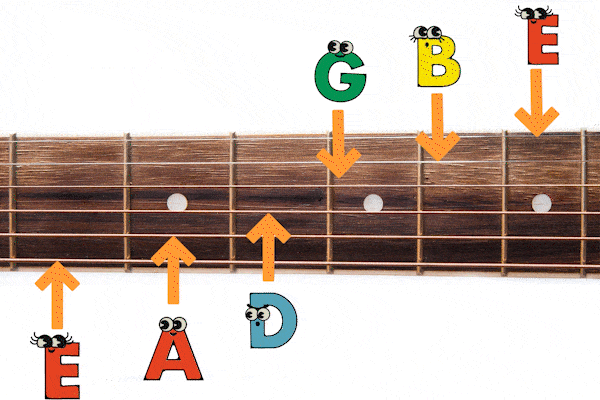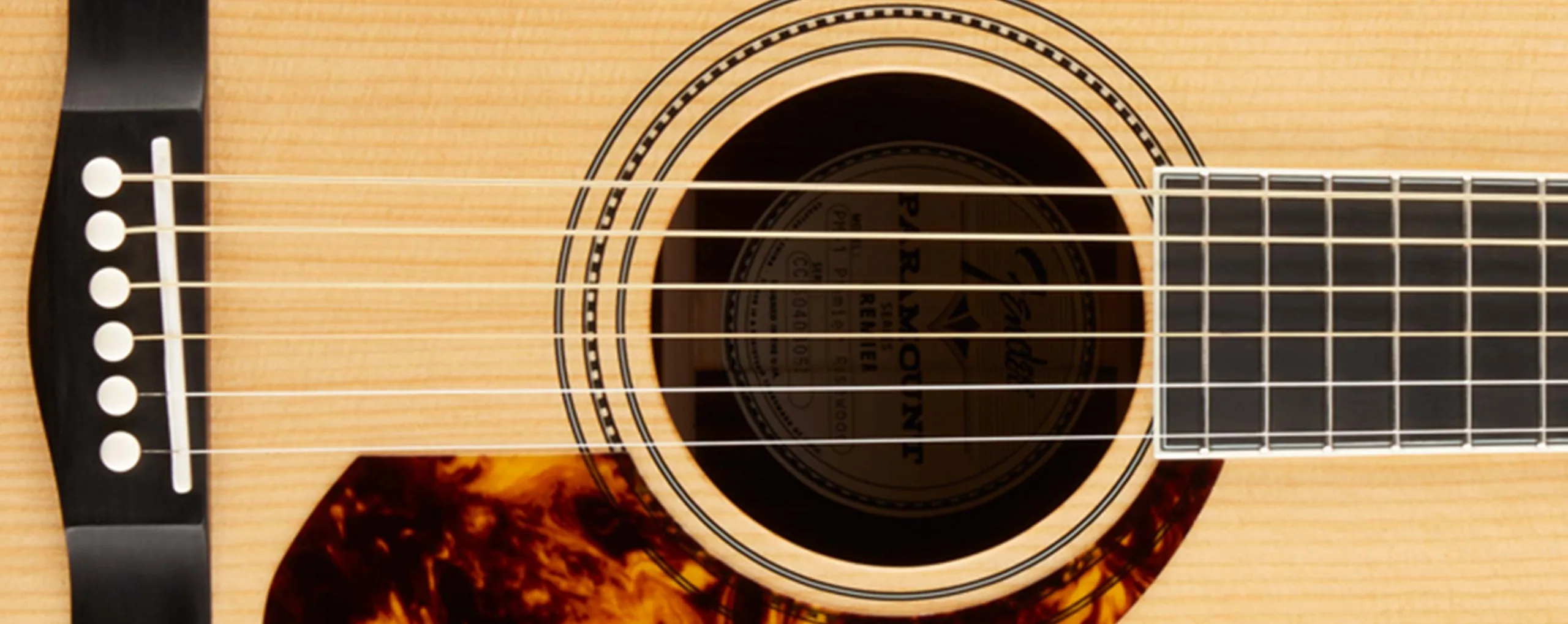Struggling to remember the strings on your guitar? Look no further! As a beginner, I know how daunting it can be trying to keep track of all those strings- EADGBE, right? But fret not (pun intended), I’m here to help you out.
In this article, I’ll share some simple tips and tricks that will make remembering guitar strings a walk in the park. From memory hacks and mnemonics to practical practice exercises, we’ve got you covered. By the end of this article, you’ll have these six strings memorized like the back of your hand. So let’s get plucking and strumming with confidence!
So, how to remember guitar strings?
Learning how to play the guitar can be a fun and rewarding experience. However, one of the most common challenges for beginners is remembering which string corresponds to which note. This may seem like a daunting task at first, but with some simple tips and tricks, you’ll have it down in no time.
Firstly, let’s go over the basic strings on a standard six-string guitar. Starting from the thickest string (closest to your face when holding the guitar), they are E-A-D-G-B-E. A helpful mnemonic device to remember this order is “Eddie Ate Dynamite Good Bye Eddie.”
Now that we know the order of the strings, let’s look at some ways to help us remember them while playing.
1. Use visual cues: One way to remember the strings is by associating each one with its corresponding color or number on your fretboard. For example, you could think of E as red or 1st fret, A as green or 2nd fret, etc.
2. Create an acronym: Another useful trick is creating an acronym using the first letter of each string’s name in order (EADGBE). You could come up with something like “Every Apple Drops Great Big Eggs” or “Elephants And Dogs Grow Bigger Every day.”
3. Practice chord shapes: As you learn different chords and their finger placements on the fretboard, pay attention to which strings your fingers are pressing down on for each chord shape. This will help reinforce your memory of where each string is located.
4 . Say it out loud: Sometimes simply saying things out loud can help solidify them in our minds. So try reciting the names of each string as you strum through them.
5 . Use songs as references: Many popular songs use open-string notes in their melodies or chords progression that can serve as a reminder for certain strings’ positions.
Remembering guitar strings may seem like a daunting task, but with these simple tips and tricks, you’ll be able to quickly recall them without even thinking. Just keep practicing and before you know it, it will become second nature to you. Happy strumming!
Understanding the Standard Guitar String Tuning: EADGBE
When you pick up a guitar for the first time, one of the first things you’ll encounter is its standard tuning: EADGBE. This arrangement might seem intimidating at first, but it serves as a beautiful roadmap for creating music. Each letter corresponds to a string on the guitar, starting from the thickest string (the low E) all the way to the thinnest string (the high E). This setup allows musicians to easily play chords and melodies that sound harmonious together. It’s like having your own little orchestra right under your fingers!
Understanding how these strings interact can unlock creativity and deepen your appreciation for guitar playing. For instance, when you strum an open E major chord, you’re letting all six strings resonate simultaneously in perfect harmony—an uplifting and satisfying sound that welcomes both novice players and seasoned pros alike. Moreover, this tuning aids in finger placement across various fret positions allowing smoother transitions between notes and chords. Here are some key points about each note in this tuning:
- E: The deep bass note sets a solid foundation.
- A: Adds warmth with its rich tone.
- D: Brightens up melodies effortlessly.
- G: Provides depth with its unique character.
- B: Offers sweetness that enhances harmonies.
- E: Completes the cycle by echoing back to where we began!
By embracing these notes together through practice, you’ll find yourself exploring countless musical possibilities!

Read also: what is the best guitar strings for acoustic
Utilizing Mnemonic Devices to Remember Guitar Strings
Learning the names of guitar strings can be tricky, but mnemonic devices offer a fun and effective solution. Imagine each string as part of a delightful phrase that sticks in your mind like glue. For standard tuning on a six-string guitar, many players use the sentence: “Every Apple Deserves Good Education.” Here, each word represents the notes E (the thickest string), A, D, G, B, and e (the thinnest string). This simple phrase transforms what could feel like boring memorization into an enjoyable little story you can easily recall whenever you pick up your guitar.
Making these devices personal adds another layer of connection. Try creating your own phrases by thinking about things you love or are passionate about! Perhaps something related to your favorite hobbies or characters from books and movies might work better for you. For example:
- “Elephants And Donkeys Grow Boldly Every day“
Each new phrase becomes more than just a tool; it turns learning into an engaging adventure. As you strum away at those strings with confidence, remember that these quirky sentences will always keep the notes fresh in your mind—ensuring music flows effortlessly from every chord played.
Practical Exercise Techniques For Memorizing Guitar Strings
Memorizing the guitar strings can feel overwhelming at first, but with a few practical techniques, it becomes much easier and even enjoyable. One effective method is to create a catchy phrase or mnemonic that matches the string names. For instance, you might remember “Eddie Ate Dynamite, Good Bye Eddie” to recall the notes from the thickest string to the thinnest: E, A, D, G, B, E. This playful sentence not only helps in memorization but also adds a bit of fun to your practice sessions.
Another useful exercise involves physically touching each string while saying its name aloud. By engaging multiple senses—seeing the strings, hearing their names spoken out loud, and feeling them under your fingers—you reinforce memory retention significantly. You can also incorporate rhythmic strumming patterns as you say each note; this ties music directly into your learning process. Additionally:
- Practice tuning your guitar by ear using reference pitches.
- Create flashcards for each string and quiz yourself regularly.
- Utilize visual aids like diagrams or color-coded stickers on each fretboard position.
These strategies will enhance both your familiarity with guitar strings and overall musicality!
Incorporating Musical Theory Into Your Guitar Learning Process
When you dive into learning the guitar, understanding musical theory can be like finding a treasure map. It helps reveal the hidden patterns and relationships in music that make playing feel more natural. For instance, grasping concepts like scales and chords allows you to see how songs are constructed. Not only does this knowledge empower you to play your favorite tunes with ease, but it also opens doors to create your own melodies. Imagine strumming along while knowing exactly which notes will harmonize beautifully together! This kind of insight makes practice sessions exciting rather than just repetitive drills.
Moreover, consider how rhythm plays a pivotal role in shaping musical ideas. By exploring time signatures and note values, you’ll develop an instinct for timing that elevates your playing style significantly. Engaging with musical notation, such as reading sheet music or tablature, broadens your ability to learn from various sources effortlessly. You might find yourself excitedly jotting down new ideas on paper or collaborating with friends without feeling lost in translation! As you blend these theoretical elements into your practice routine, they become not just tools but companions on your journey toward mastering the guitar—making every strum more meaningful and rewarding.

